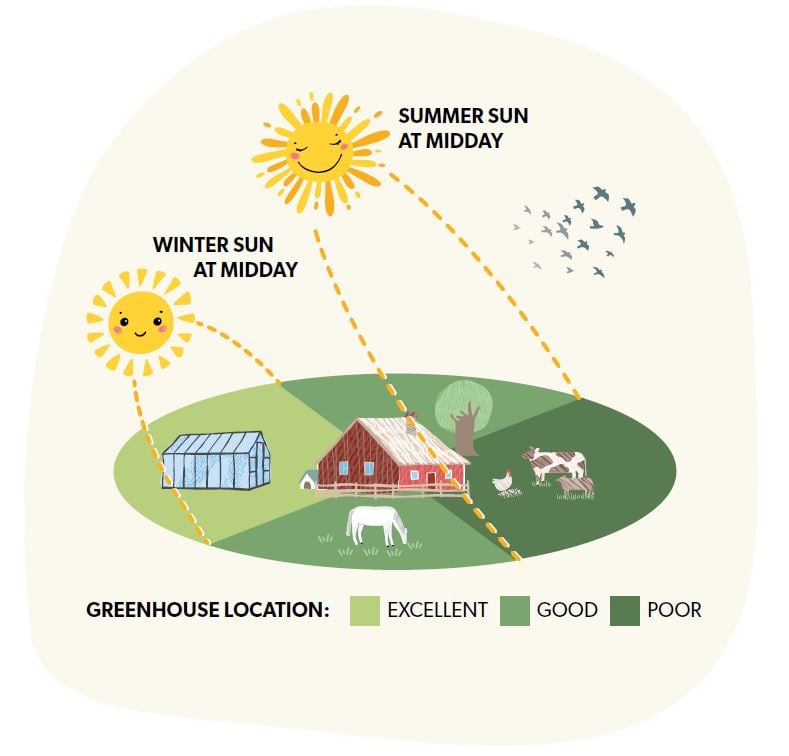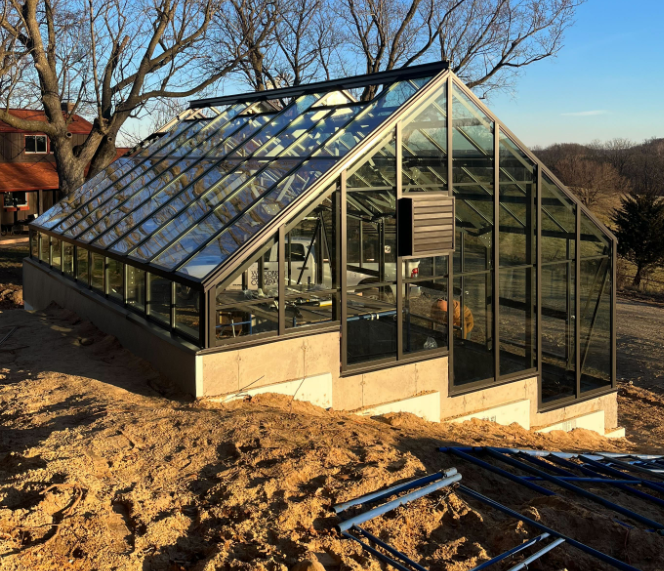Quick Answer:
What’s the best location for my greenhouse to ensure optimal plant growth year-round? For best results, place your greenhouse on level ground with south-facing exposure to capture maximum winter sunlight, while factoring in seasonal angles, partial summer shade, and access to water and power. How does greenhouse placement affect light, temperature, and productivity? Strategic orientation and site selection help regulate temperature, extend your growing season, and reduce maintenance—setting the stage for long-term success in any climate.
How to Pick the Perfect Spot for Sunlight, Temperature, & Long-Term Success
Believe it or not, where you place your greenhouse can make or break your growing success. The right spot helps your plants thrive year-round—while the wrong one could leave you fighting shade, heat, or cold.
Good news: we've done the homework for you. Here are 9 key tips to help you choose the best location for your greenhouse.
1. Chase the Winter Sun
Make sure your greenhouse gets at least 6 hours of sunlight per day—especially in the winter months. This is when light is in shortest supply, and your plants need every ray they can get.

2. South-Facing for the Win
Position the longest side of your greenhouse to face south. This maximizes light exposure during the day and is one of the best ways to keep temperatures consistent.
3. Consider Shade in the Summer
If you planning to grow tender plants or use your greenhouse in hot summer months, consider a spot with partial shade. It helps protect plants from overheating and reduces the need for constant ventilation.
4. Extend Your Growing Season
Want to grow earlier in the spring or later into fall? For a cool-climate greenhouse, orient the building east to west to help capture more solar heat.
5. Level Ground Matters
A flat, level surface is ideal. If your yard slopes, you may need extra prep work like digging, backfilling, or building retaining walls. A level foundation also helps with stability and water drainage.

6. Easy Access to Utilities
You’ll thank yourself later if your greenhouse is close to power, water, and tool storage. Hauling bags of soil or fertilizer long distances gets old fast.
7. Think About Winter Light Angles
In winter, the sun sits lower in the sky and moves across a narrower path. A greenhouse on a west-facing wall may get lots of summer light but very little in winter. If you want to grow through the cold months, factor in the seasonal sun angles.
8. Small Shifts, Big Differences
Use a compass to fine-tune your placement. Even a 15-degree rotation can impact how much light each side of the greenhouse receives. Southeast exposure may reduce morning sun but boost afternoon warmth—ideal for some plant types.
9. East vs. West Sun
East sun warms things up early and jumpstarts photosynthesis. West sun extends daylight and can heat your greenhouse significantly—even on cloudy days. Both exposures have benefits depending on your goals.
Need more info on placement of your greenhouse?
Check out our greenhouse foundation guide for more or contact us today to speak with a greenhouse expert!
Get our Free Greenhouse Foundation Guide
Everything from site preparation to building and even home attached and underground greenhouse options too!



